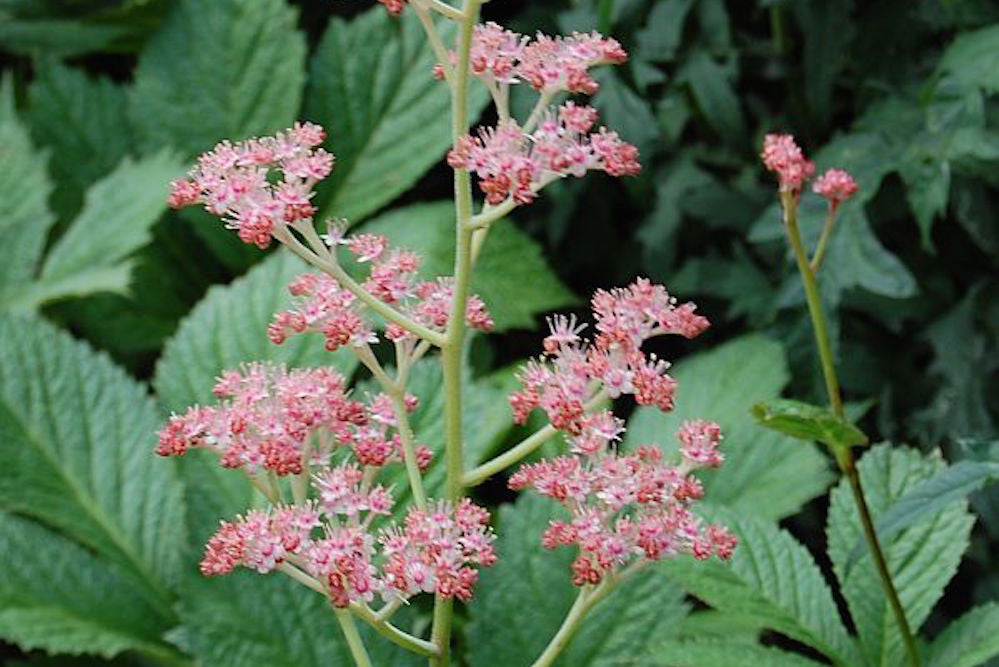


About this cultivar:
Rodgersia pinnata 'Die Stolze' is a bold one. 'Die Stolze', tranlating as 'the Haughty', is prized for its handsome foliage and wide Astilbe-like floral spikes. Large deep green pinnately compound leaves—bronzed when young and affixed to long petioles—entertain shiny pleated surfaces and toothed margins. Warmed by salmon shades, the branched flowering panicles feature rounded clustered buds and copious small starry pale pink flowers. As the sturdy blooms mature, their colour deepens, imparting cozy russet hues and retaining their good looks well into October.
- Position: Full sun (if enough moisture), partial shade, full shade
- Soil: Almost any soil, grows well in Ballyrobert
- Flowers: June, July, August
- Other features: Dappled Shade or Full Shade Loving, Woodland Plant
- Hardiness: Fully hardy, grows well in Ballyrobert
- Habit: Clump forming
- Foliage: Deciduous
- Height: 60 - 90 cm (2 - 3 ft)
- Spread: 60 - 90 cm (2 - 3 ft)
- Time to full growth: 2 to 5 years
- Plant type: Herbaceous Perennial
- Colour: Green, pink
- Goes well with: Iris, Primula, and Astilbe
About this genus:
Rodgersia (rod-jer-se-a) is a genus of flowering plants in the Saxifragaceae family originating from east Asia. The genus was designated by the American taxonomist, A.Gray, in 1885, who named it after the US Admiral, John Rodgers, commander of the expedition in which R. podophylla was discovered in the 1850s. By 1871, Rodgersia was present in the United States and was flowering in the Imperial Botanical Garden at Saint Petersburg and in 1878, seed brought back to a British nursery, Veitch & Sons, produced flowering plants.
The spread of the compound leaves can be large, making them architectural type plants. The flowering stems rise above the foliage and the panicles of flowers, although lacking true petals, are spectacular and colourful being white, cream, pink, or red.
The leaves of many varieties are attractive in the Spring when, grown in good light, they have a bronze or copper hue. In the autumn, the leaves turn attractive shades of coppery-brown. The seed heads are also attractive, those of many R. pinnata are claret coloured which deepens as winter progresses.
In their native habitats they grow by streams and in shady moist woodland. In cultivation they thrive in soil that never dries out but is not waterlogged. Despite being shade lovers they will grow in sun if they have enough moisture but they are susceptible to wind-scorch.
As you can imagine for plants that like shade and moisture they are very popular with us and our local customers who often see them growing along side Iris, Primula, and Astilbe in a shady border next to our nursery where the water run-off collects. But don't let this limit you to damp shady areas - they are truly wonderful plants that deserve some room in any part of the garden.

